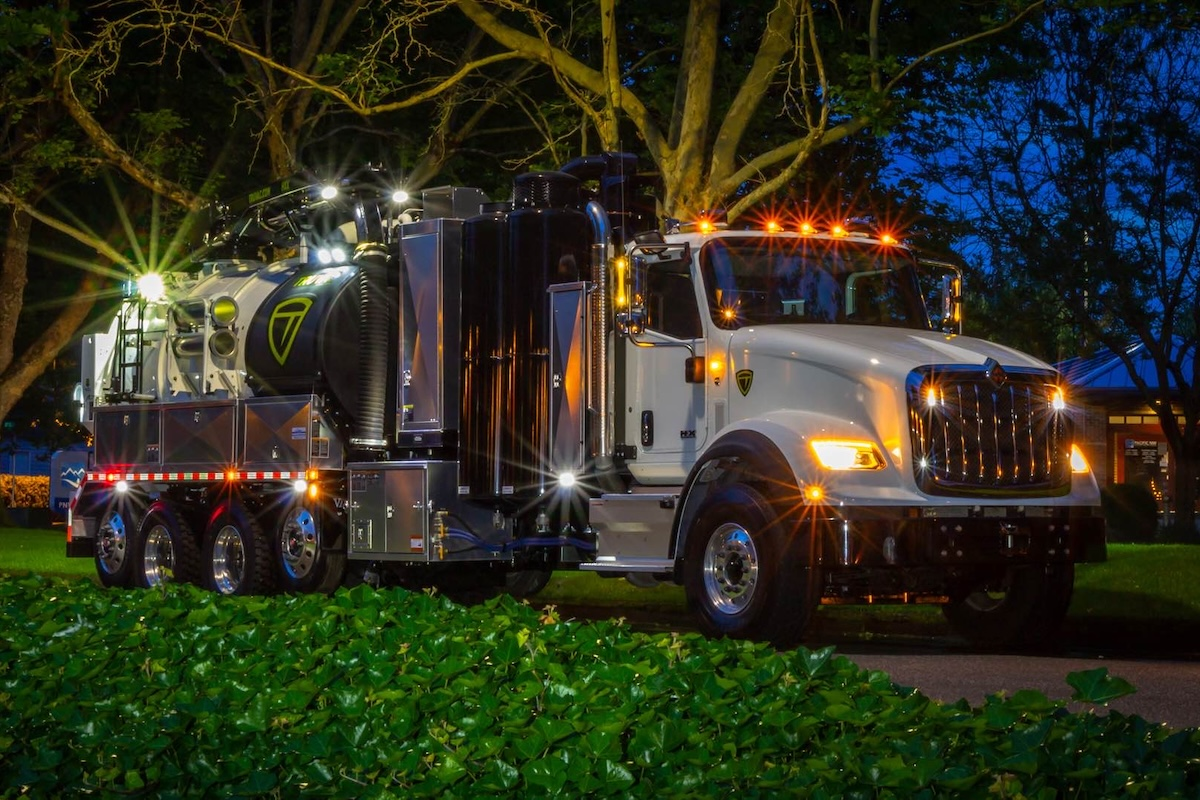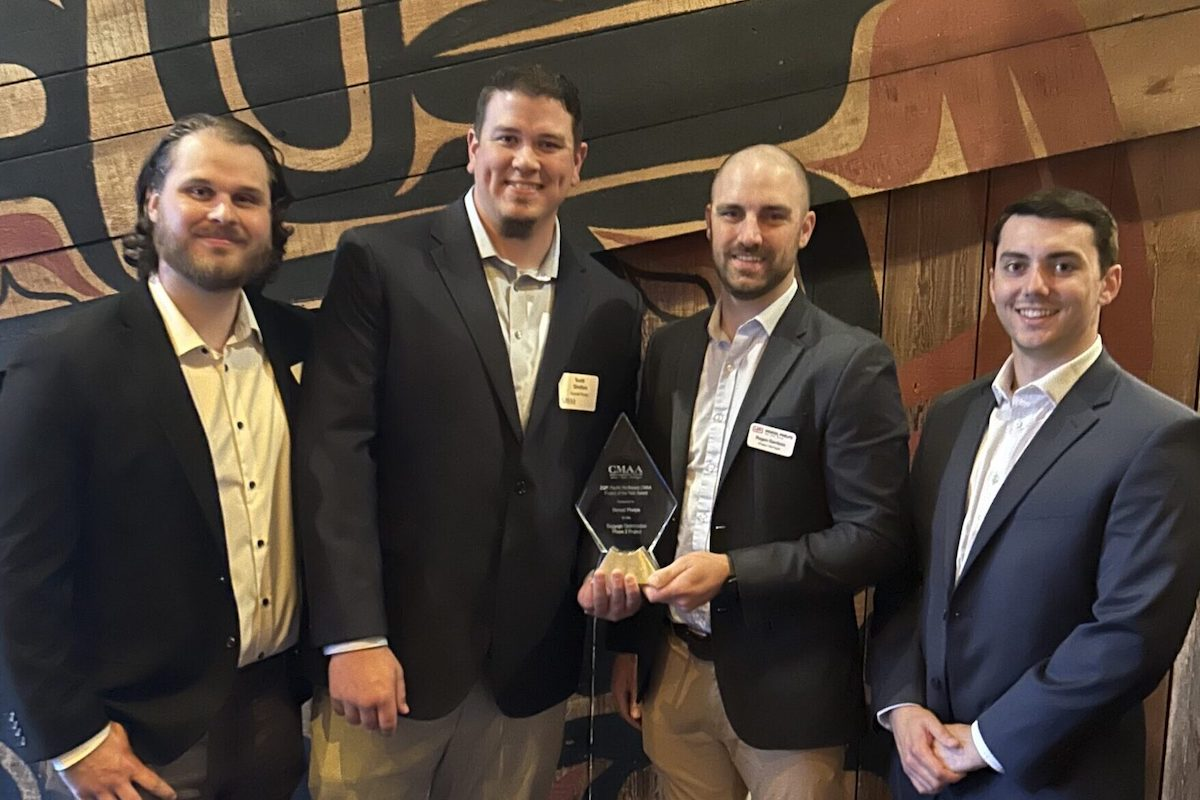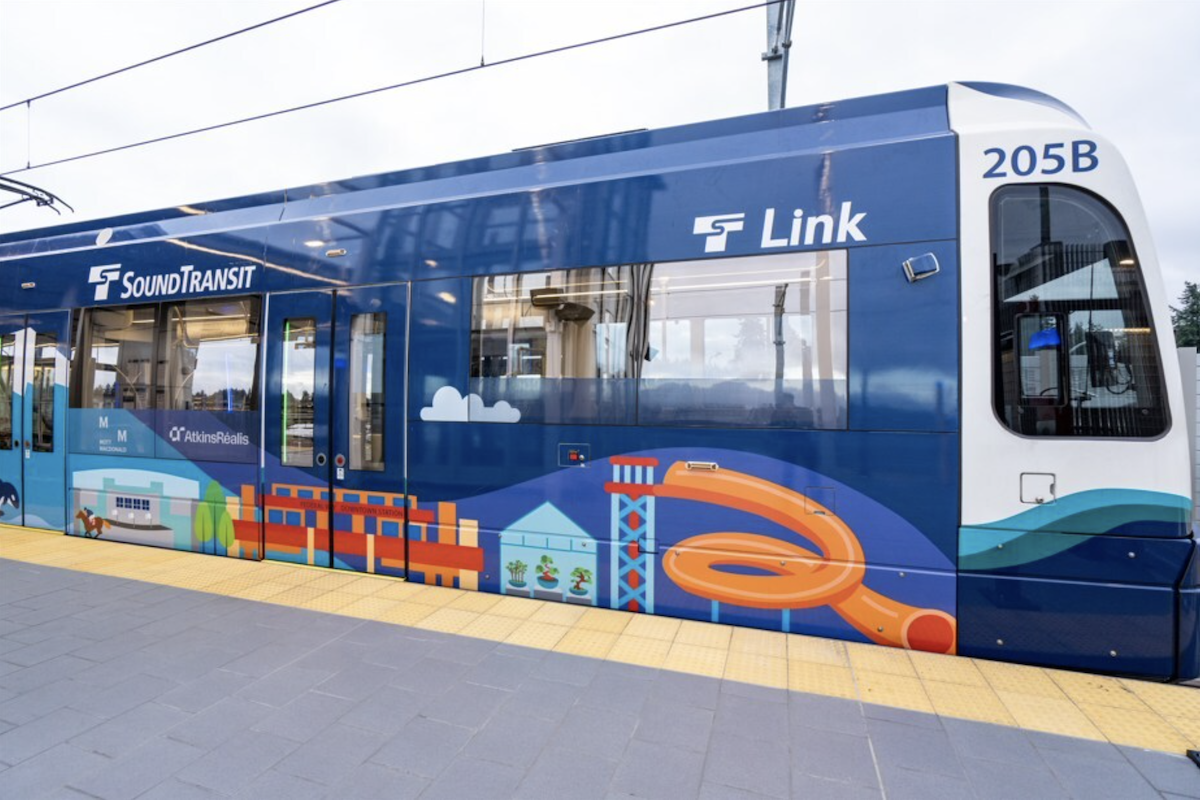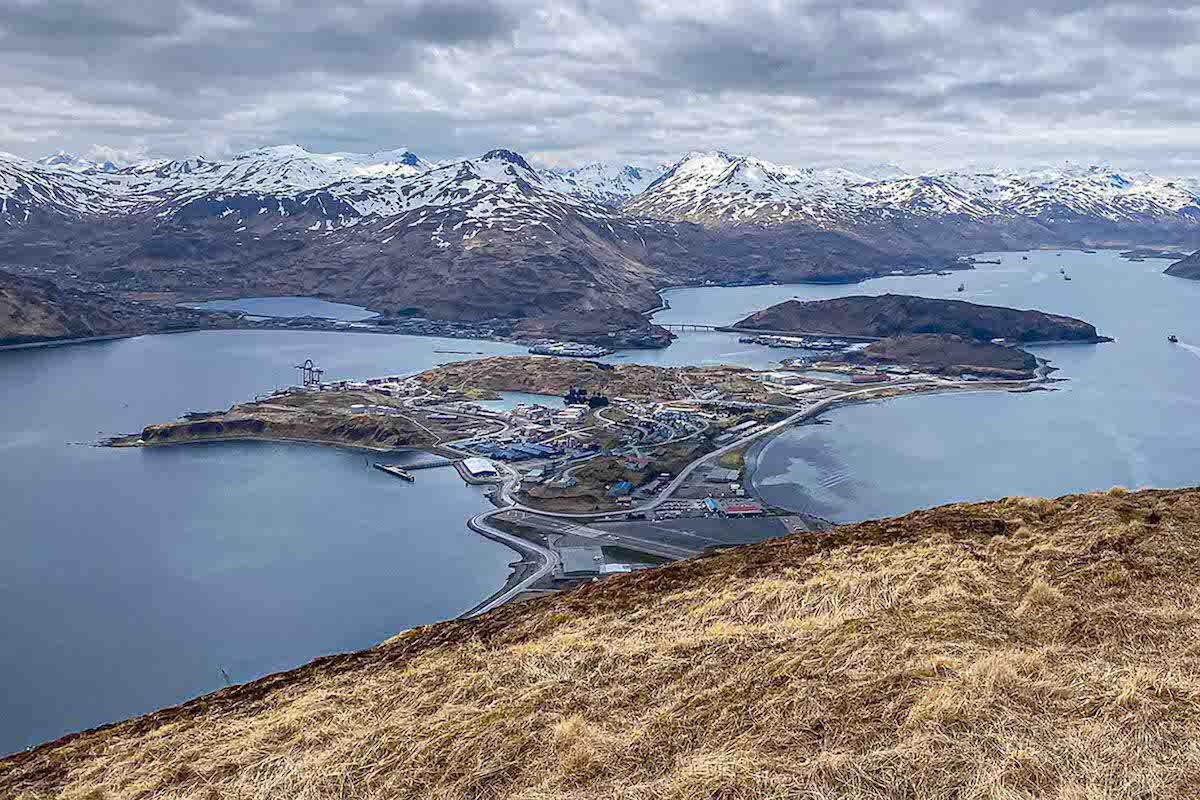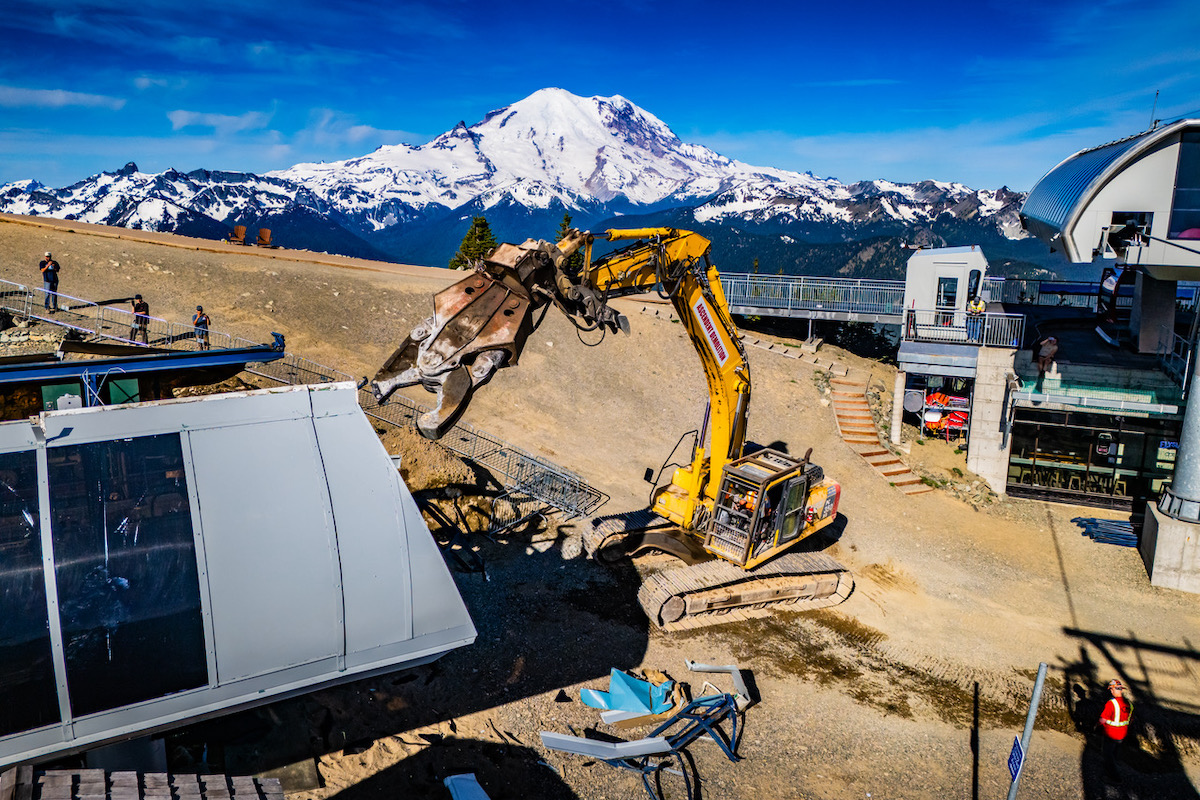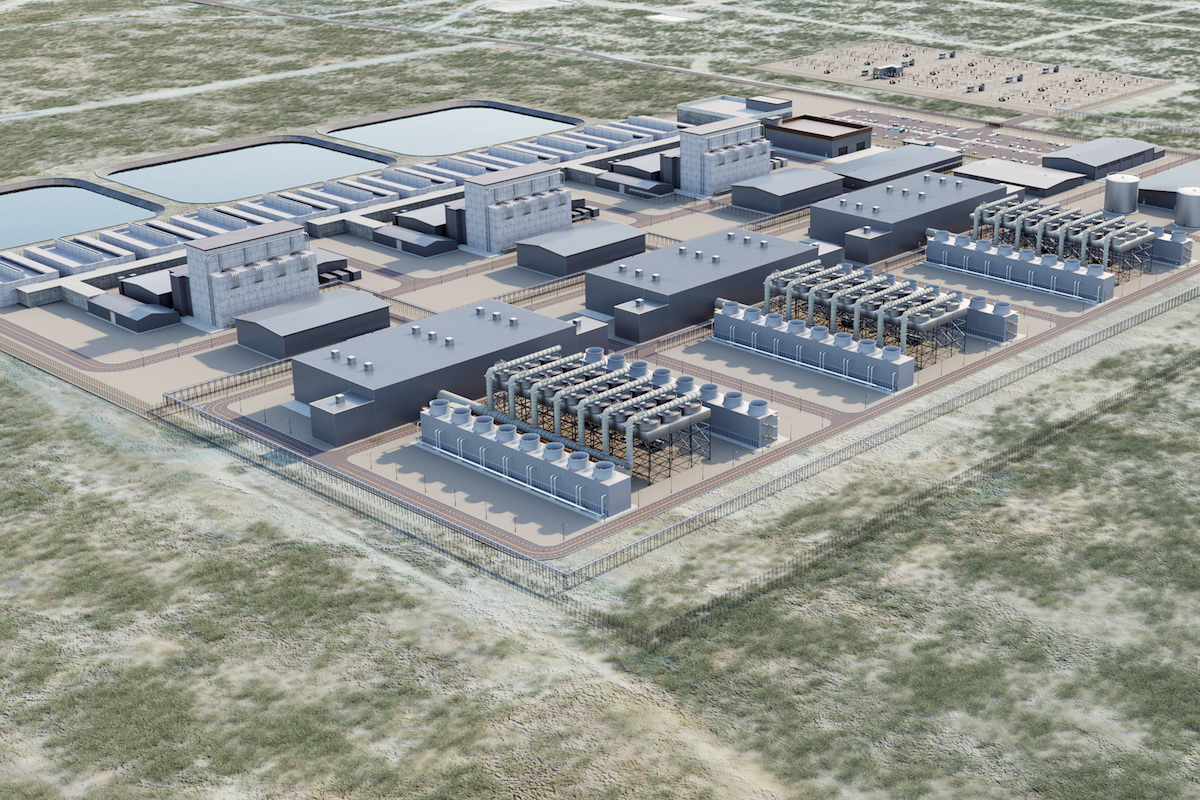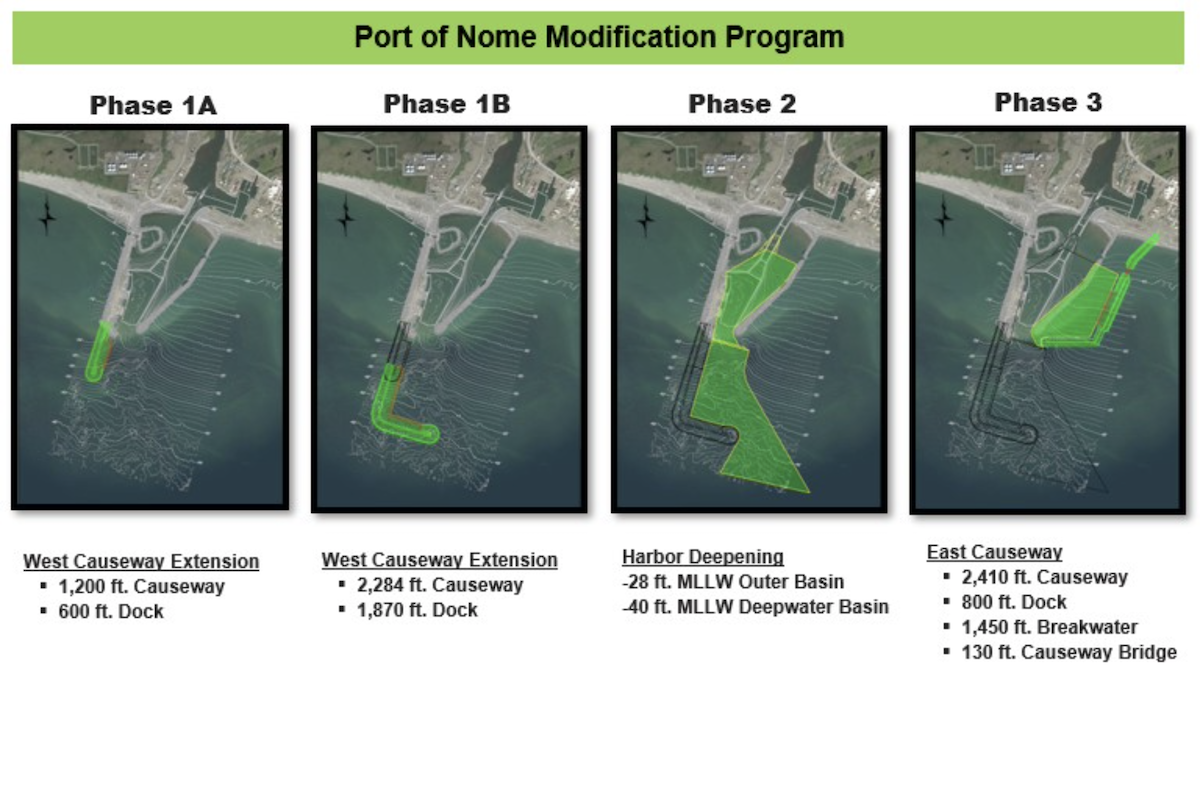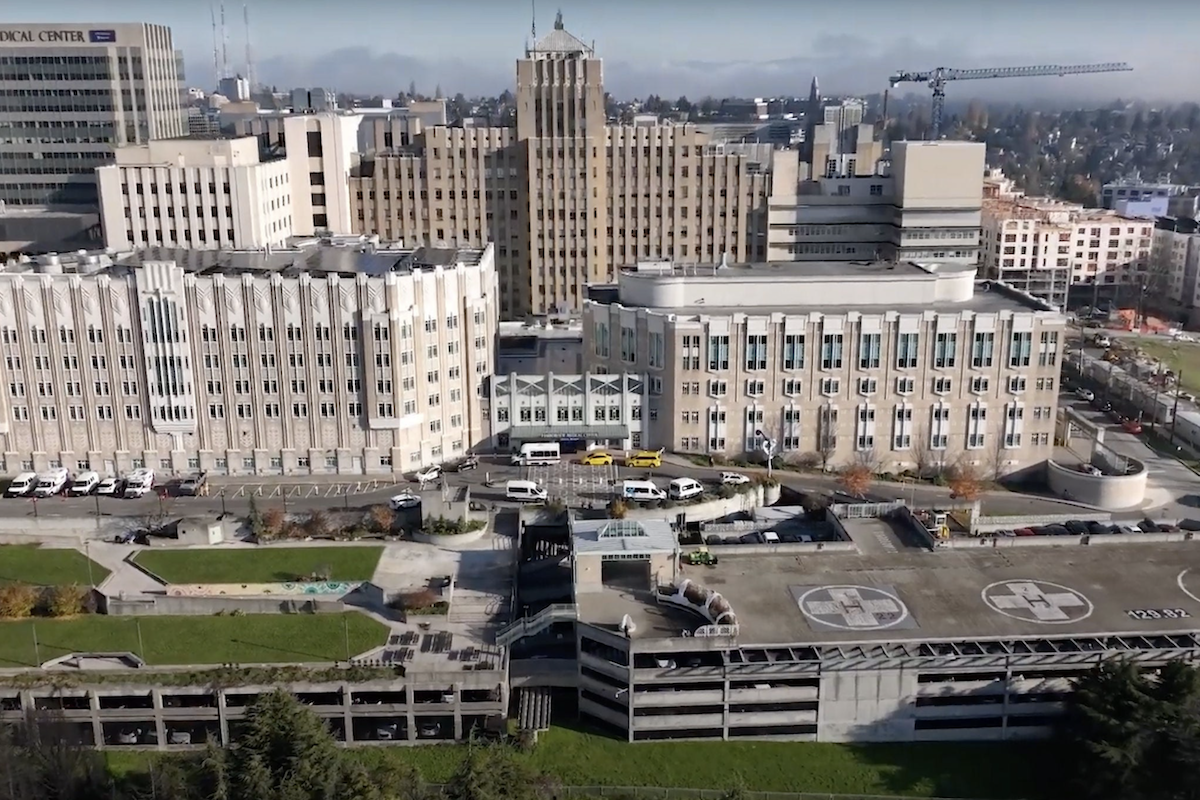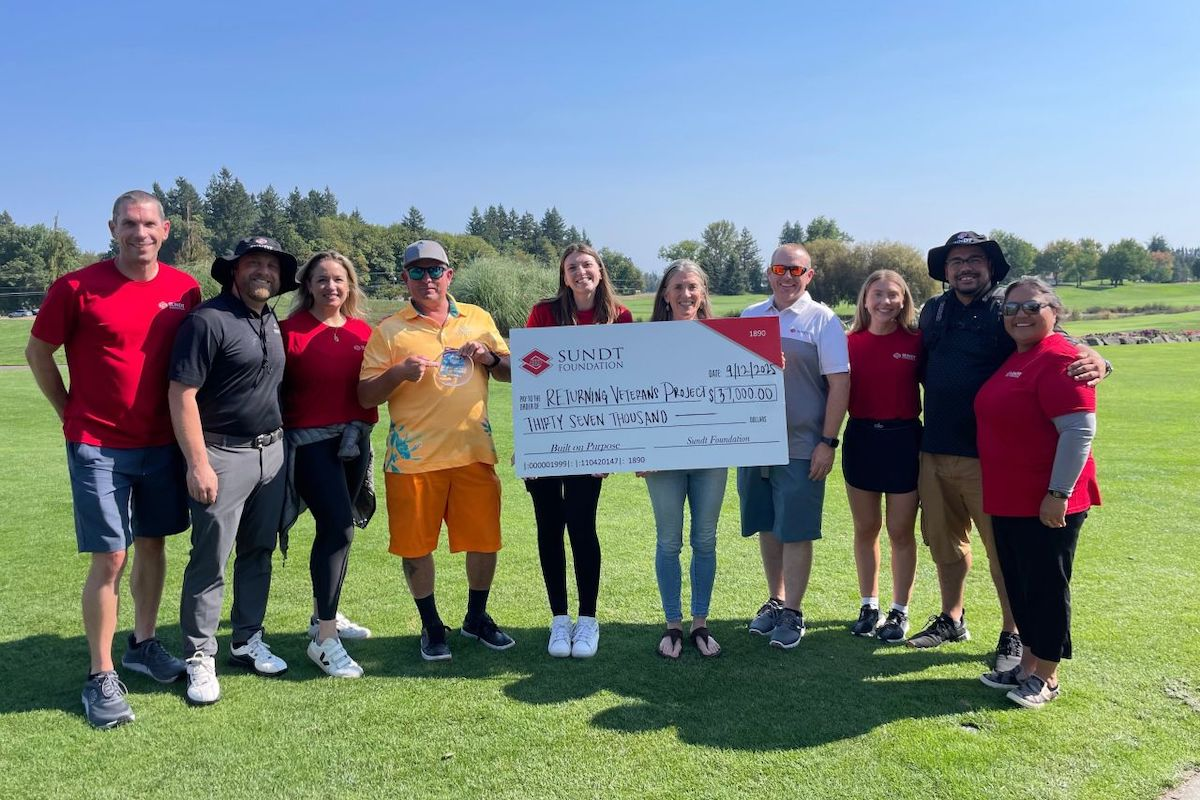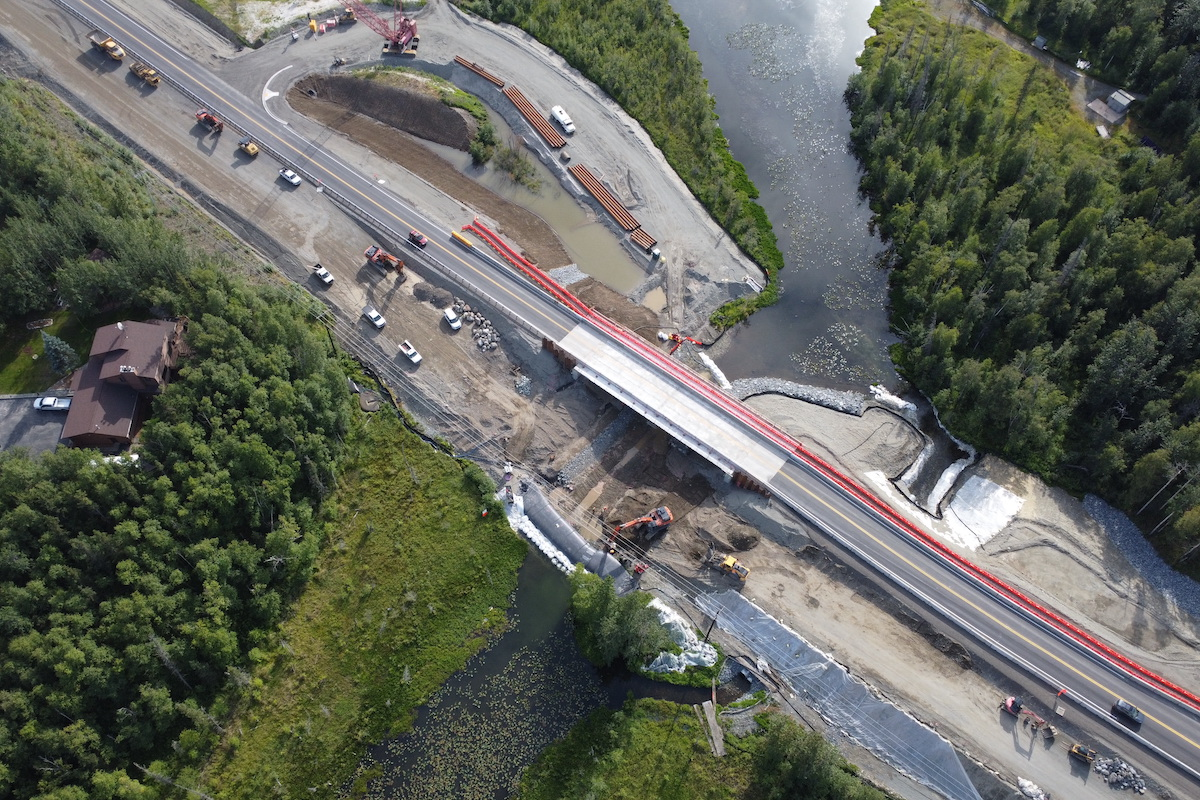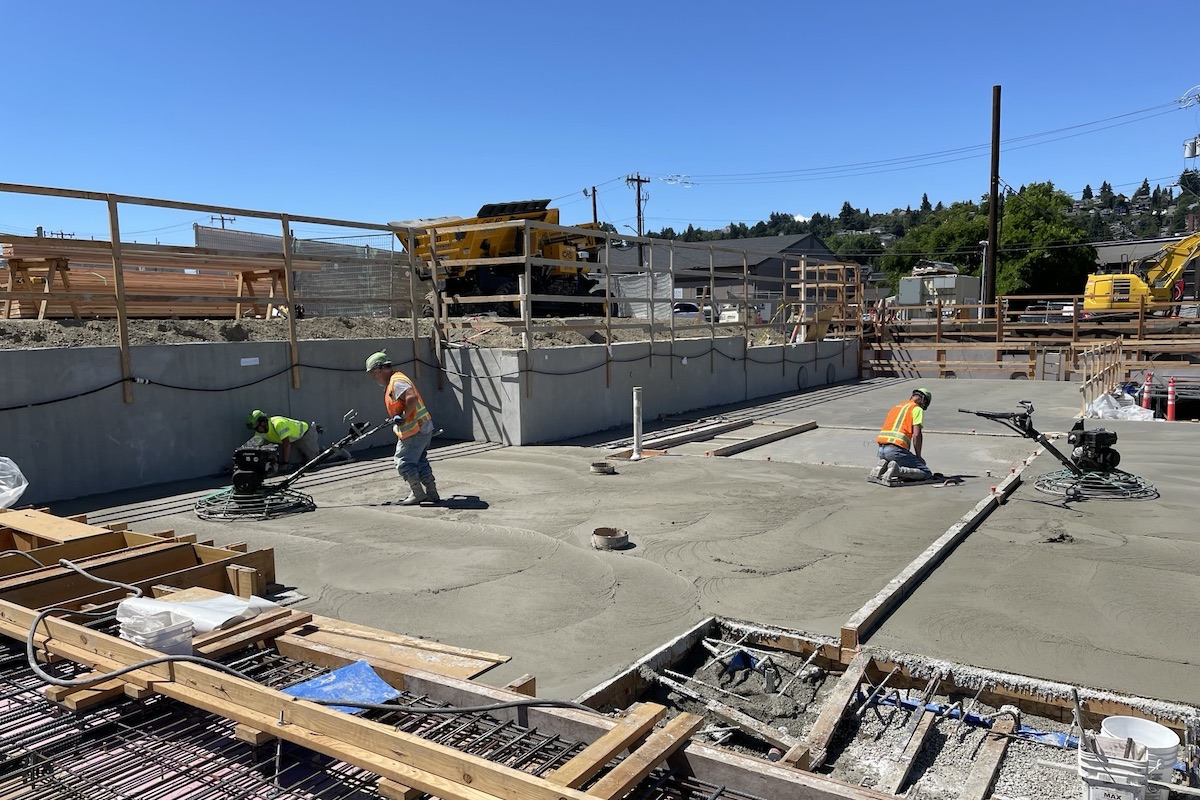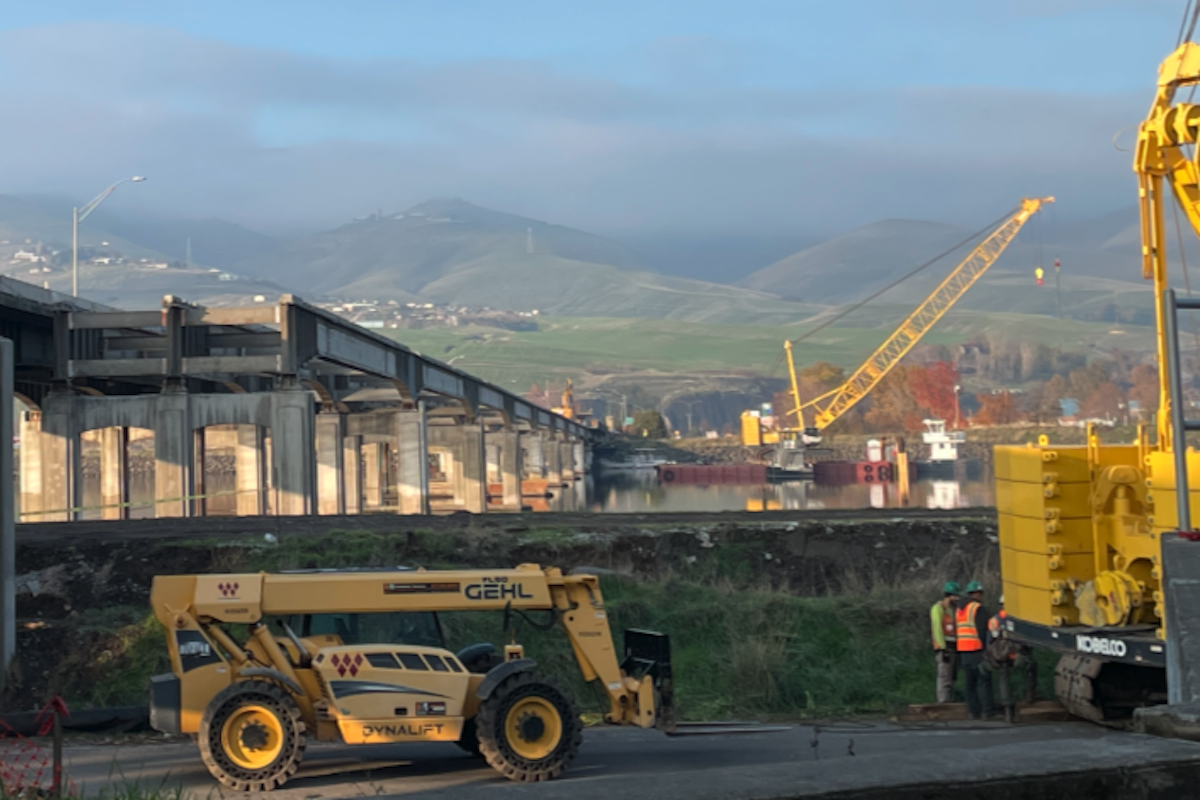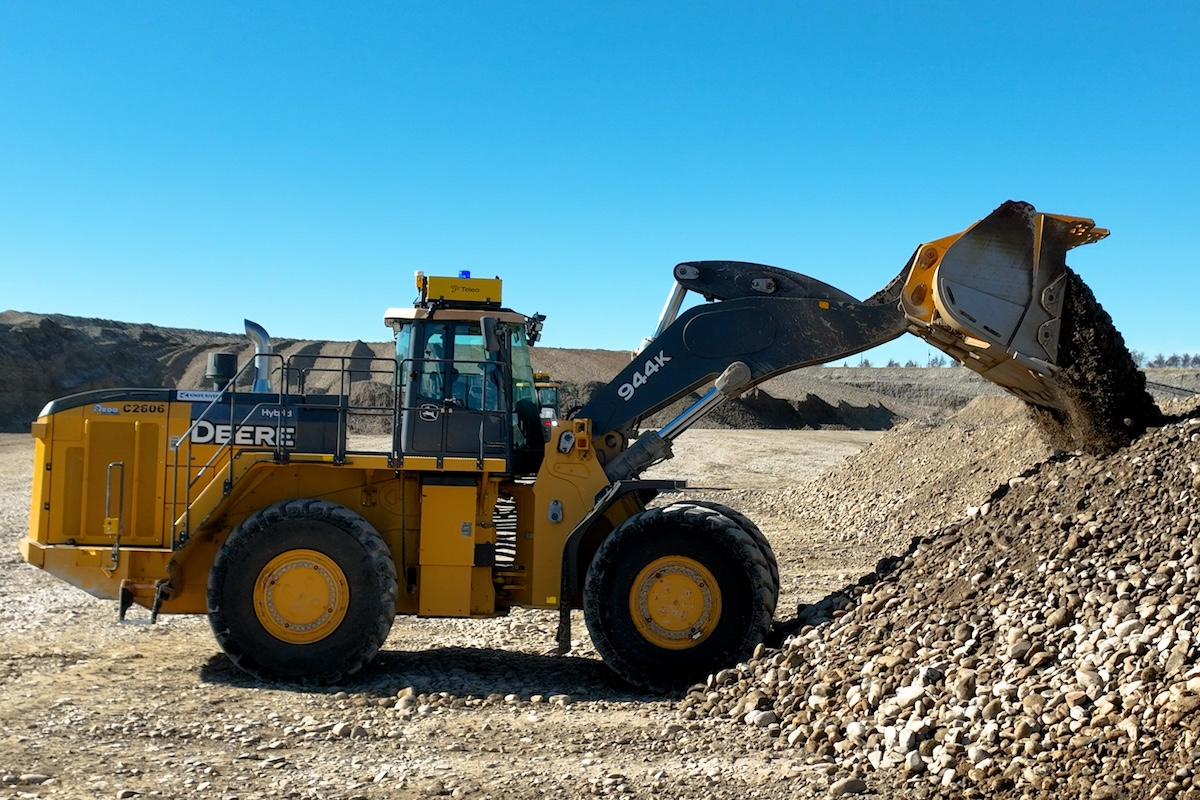For the joint venture of Sundt Construction and Cannon Builders, the Interstate 86/Interstate 15 System Interchange project in Idaho’s Pocatello/Chubbuck metropolitan area requires relatively straightforward road and bridge construction. The real challenge is coordination and logistics.
“The project is essentially a giant, highly coordinated puzzle,” Sundt Project Manager Thiago Bezerra said. “There are various ramps, flyovers, and roads which essentially break up the work into several smaller pieces. We have over 10 active work zones on the job that are crisscrossed with highway.”
In total, the project involves construction of eight new bridges; over 1 million cubic yards of earthwork excavated; 12 mechanically stabilized earth walls totaling about 70,000 square feet, with some being over three stories high; new roadways; and multiple on- and off-ramps — all in a compact work zone under and alongside live interstate traffic.
Known as the “Flying Y,” the interchange was first constructed in the 1960s with short, left-sided merges and ramp curves, which resulted in congestion and a higher rate of accidents as the area grew.
To improve safety, mobility, and economic opportunity, the Idaho Transportation Department (ITD) included multiple pieces in the $112 million project:

| Your local Superior dealer |
|---|
| Westate Machinery Co |
- Reconfiguring ramps that connect I-15 and I-86 in two locations to exit from the right instead of the left
- Lowering and rebuilding Chubbuck Road as an underpass instead of an overpass so oversized vehicles no longer need to detour off the interstate
- Constructing two new I-15 bridges over Chubbuck Road
- Adding a pedestrian and bike path
In spring 2022, ITD awarded the construction contract to the joint venture team of Sundt, based in Salt Lake City, Utah, and Cannon Builders, headquartered in Blackfoot, Idaho. They began construction on the three-year project in July 2022.
With the magnitude of work, aggressive schedule, and different work zones, “We must continually shift resources — both material and equipment,” Bezerra said.
Around-the-clock work and all the work zones require over 100 people from Sundt and Cannon Builders on site each day, including about 15 supervisors. The project also includes 96 subcontractors and suppliers.

| Your local Metso Minerals Industries Inc dealer |
|---|
| PacWest Machinery |
| Westate Machinery Co |
“We have four coordination meetings amongst different groups every day, as well as scheduling and planning tools,” Bezerra said.
One of the biggest challenges of the Flying Y interchange reconstruction is maintaining traffic flow through the narrow work zones while ensuring the safety of construction crews working close to motorists.
“Our crews are essentially sandwiched between high-traffic areas everywhere we work on this job,” Bezerra said. “Technology is proving to be an essential piece of this project to keep our crews safe while maintaining productivity.”
GNSS has provided multiple benefits to the project team. Two onsite rovers and a base station ensure a continuous signal and accurate positions throughout the work area to support survey instruments and equipment.

| Your local Trimble Construction Division dealer |
|---|
| SITECH Northwest |
Using 3D baseline design models provided by ITD as a foundation, Sundt and Cannon Builders cleaned the models within Trimble Business Center Software to support earthwork activities across the job site. The models were further refined to support the different layers, including subgrade, base, and asphalt. Aerial survey data collected from Trimble Stratus Software was also layered into the earthwork models.
Each day, the models are sent to the GNSS-equipped construction equipment, which includes multiple motor graders, excavators, and dozers with either the Trimble Siteworks Machine Guidance Module or the Trimble GCS900 Grade Control System.
With many work areas right next to the highway, equipment operators reference the pre-loaded digital designs to safely guide grading and other work from within their cabs. Surveyors use rovers to spot check work.
“GNSS equipment helps us avoid having surveyors continually working on the ground next to this traffic,” said Michael Marsh, Project Engineer with Sundt. “The pre-loaded models greatly reduce the time our surveyors have to spend on the ground staking or checking.”

| Your local Gomaco dealer |
|---|
| American Construction Supply |
All heavy equipment has blind spots, and with every worker focused on their own tasks, the potential for accidents remains. However, the integrated GNSS systems help by allowing data sharing between equipment in real-time, improving communication and workflows.
“Trimble GNSS systems on construction equipment like graders, dozers, and excavators allow operators to read grade information from the cab, eliminating the need for surveyors to work on foot in hazardous areas near moving equipment and traffic,” Marsh said. “With GNSS on our machines, we can send a blade out to check the grade rather than sending a person on the ground. We’re trying to eliminate the need for people on the ground in the midst of all of this big equipment and interstate traffic.”
That scenario plays out daily. Bezerra noted that in one case, an excavator operator was working in tight conditions with limited visibility and considerable heavy equipment traffic around a relatively small area, next to live traffic.
Rather than have a surveyor on foot to support the operator, a nearby bulldozer equipped with GNSS technology guided the excavator. The dozer operator could reference the digital design model from within the protected cab to check elevations.

| Your local Volvo Construction Equipment dealer |
|---|
| PacWest Machinery |
“We’re seeing real, demonstrated safety and efficiency improvements,” Marsh said. “All of the different layers of linework are already in the software on our equipment. Now we can have, for instance, seven operators on seven pieces of equipment instead of five operators and two on-the-ground surveyors. We’ve eliminated concerns about blind spots, and we’re not exposing our surveyors to weather, steep slopes, or other equipment.”
Other innovations also keep the work proceeding safely and efficiently. For instance, to move excavated material from one work area to another for reuse, the team utilized a conveyor belt system.
“With that system, we were able to go over traffic and avoid trucks entering and exiting the highway,” Bezerra said. “We avoided over 40,000 interactions compared to using haul trucks. That not only provided efficiency in our operations, but also safety for the traveling public.”
When crews finished excavating one area, they moved the conveyor belt system to the next excavation site.

| Your local Bobcat dealer |
|---|
| Pape Material Handling |
Another extremely tight workspace resulted from the need to build one of the bridges before setting wall panels underneath the structure. With no room for cranes to move the 30-foot-tall concrete panels, crews used two Caterpillar 349 Excavators.
“Maneuvering these 25,000-pound concrete slabs pushed the limits of what these machines could handle; it was a dance,” Bezerra said. “Tight vertical tolerances only gave us 3 inches between the excavator and the bottom of the girders, but extensive planning and flawless execution made it look easy.”
The team also deployed a GNSS solution on a skid steer to support work in tight, restricted areas. “When we run into these conditions, we know we can rent additional equipment and then the folks at SITECH Western States, our technology partner, are there to enable GNSS on our equipment,” Bezerra said.
The symmetry between Sundt and Cannon Builders also helps overcome challenges. Crews from both companies use shared tools, software, and equipment, with no distinction between the two companies. GNSS and other technologies are a big part of delivering that cohesive environment with streamlined communication and data sharing.

| Your local Somero dealer |
|---|
| American Construction Supply |
The team’s many collaborative efforts resulted in the project receiving one of the 2023 ITD/Associated General Contractors of Idaho Partnering awards. The annual awards recognize transportation teams for their ability to resolve conflict, improve communication, utilize innovative solutions, honor stakeholders, and achieve a common goal.
“Many joint ventures can be a little segregated, but on our project, we made a point to blend most of the crews with both Sundt and Cannon employees — in the field, supervisors, and in the office,” Bezerra said. “It took some practice and discussions with the crews to make sure everybody adopted the culture. We did our best to make sure everyone understood that on this project, it doesn’t matter if you work for Sundt or Cannon; we’re all one team, and we’re all building the same thing together.”
Now over 70 percent complete, the project is on schedule to finish in mid-2025. Once completed, the new I-86/I-15 system interchange will offer safer travel, ready to carry increased traffic volumes in the fast-growing area.
Photos courtesy of Sundt Cannon JV















